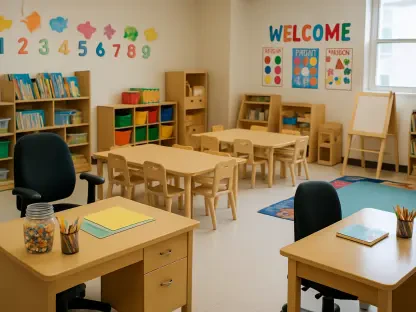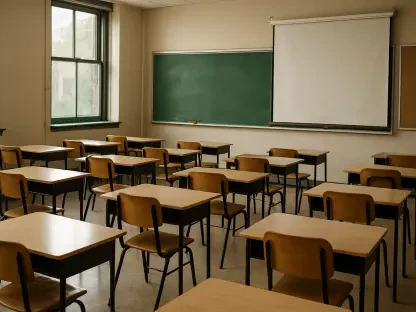The world of work is changing faster than ever, and students are starting to prepare for careers earlier in life. Learners are under enormous pressure to kick-start their journey into the world of work, and the pipeline starts at high school. Prepping to get into a top university is an entire industry with consultants, extracurriculars, practice exams, and a litany of AP classes for top-performing students.
For the majority, these interventions are costly, and require private school fees alongside extra tuition, camps, volunteer trips, and more. The closest equivalent in the public sector exists within magnet schools. With an interesting history, and a record of producing outstanding candidates who excel in university and beyond, magnet schools provide students with the edge they need to compete.
What are Magnet Schools
Magnet schools are somewhat of a middle ground between private and public education. Often referred to as the public schools of choice, magnet schools are elementary, middle, or high schools that differ from traditional public institutions in that they offer tailored instruction instead of the prescribed curriculum. These programs, offered in cohorts rather than to the entire school, attract a substantial number of students of different social, economic, ethnic, and racial backgrounds.
The educational themes that some magnet schools focus on include:
Science, Technology, Engineering, and Mathematics (STEM)
Fine and Performing Arts
International Baccalaureate, International Studies
Career and Technical Education (CTE)
World Languages (immersion and non-immersion)
Getting into a magnet school is not as straightforward as living in the right zone or making an application. This is how magnet schools maintain their commitment to diversity, equity, and inclusion. For the more popular schools, a randomized lottery process is used.
To be considered for the lottery, applications must be submitted to the school. If a student is applying to join their siblings, they’re likely to be prioritized. Schools with a special focus on the arts may require an audition or additional application step, which will be highlighted by each school or program.
These institutions prioritize soft skills and help prepare students for life beyond the classroom through targeted skills development programs, community service projects, and real world applications to problem solving. The focus is on the holistic development of a learner, and not simply preparation for rote-based assessment standards.
Why Magnet Schools?
Magnet schools provide parents, educators and learners with a supportive ecosystem that caters to the needs of the student. This environment has enormous benefits on the academic, social, and behavioral development of students, as evidenced by the lower suspension rates among demographics that are disproportionately high in public schools.
There are a number of factors that impact a student’s likelihood of being accepted into a prestigious institution. Magnet schools use a holistic approach to the growth and development of learners, which stands them in good stead for their later years.
The question here is, what are the interventions and programs that facilitate support, growth, and development in learners, and how does this impact their onward trajectory? Here are a few key insights:
Diverse Learning Environment
Magnet schools understand that learning is dynamic, and these institutions lean away from traditional teaching methods by embracing diverse learning environments. Students are encouraged to enjoy the outdoors, try new things, and engage with the world around them. Magnet schools are also known for providing international exchanges for students, an experience that enriches not only their perspectives, but adds to their resume when applying to colleges.
Strength-based Curriculum
Rote-learning for standardized tests is how the traditional school system operates, and there’s growing voices of dissent that argue that this form of education does more to harm than to help. Magnet schools, on the other hand, focus on professional development and thrive on creative thinking. These skill sets and learning styles better prepare students for university life and, subsequently, the workplace.
Magnet schools also give learners the opportunity to focus on their strengths by following a particular educational theme or learning area (STEM, the arts, world languages, etc.) With increased personal attention, students consistently outperform their public-school counterparts when grading systems are used as an assessment tool.
Academic Excellence is a Priority
On the whole, magnet schools produce better academic results than traditional public schools. That’s not to say there aren’t instances where learners from a magnet school aren’t consistently underperforming, but the variety in instruction and curriculum can often be a catalyst for better results. The aim is to maximize the potential of the learner in their area of focus, and teachers are able to design assessments that lend themselves to this. At magnet schools, learners are expected to achieve, and this pressure is balanced out with clear communication, accountability, and support. Each family is held to the same standard, despite the individual learning paths of the students.
Community Involvement
Magnet schools emphasize the importance of community. Families and the local community play a role in the overall development of students by being active participants in the learning process. With projects focused on real-world examples and community issues, learners are equipped with problem-solving and critical thinking skills. They are also better equipped to work with diverse groups of people and learn how to accept and adapt to different perspectives, cultures, and ideas.
Conclusion
Students are starting to experience the pressures of their future working world while still in high school. The prevailing belief is that good grades and an outstanding portfolio of leadership and extracurriculars can secure a spot in a good university, and graduating from a top college increases the chances of securing employment.
But the playing field is uneven and this pipeline largely works for the minority with access to resources; this allows only a few students to produce glowing resumes that include outstanding grades, prestigious volunteer programs, intensive camps, and international exchanges.
Magnet schools are publicly funded institutions that specialize in a few key themes and programs. Using a lottery system to allocate placements, they have historically been linked with desegregation and in today’s day and age, they’re a beacon for diversity, equity, and inclusion.
With strong community ties and a reputation for excellence, magnet schools offer students a holistic environment for development in an area of specialty of their choice. With smaller classes and holistic skills and development programs, magnet schools are steadily producing well-rounded young people who can confidently pursue their dreams. Equipped with the necessary soft and hard skills required to attract the attention of admissions boards, magnet school students are preparing for the world of work without the stressors that their counterparts in traditional public schools experience.









